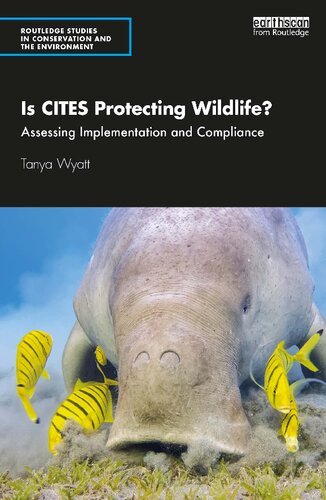

Most ebook files are in PDF format, so you can easily read them using various software such as Foxit Reader or directly on the Google Chrome browser.
Some ebook files are released by publishers in other formats such as .awz, .mobi, .epub, .fb2, etc. You may need to install specific software to read these formats on mobile/PC, such as Calibre.
Please read the tutorial at this link: https://ebookbell.com/faq
We offer FREE conversion to the popular formats you request; however, this may take some time. Therefore, right after payment, please email us, and we will try to provide the service as quickly as possible.
For some exceptional file formats or broken links (if any), please refrain from opening any disputes. Instead, email us first, and we will try to assist within a maximum of 6 hours.
EbookBell Team

4.7
96 reviewsThis book assesses the Convention on International Trade in Endangered Species of Wild Fauna and Flora (CITES), examining both implementation and compliance.
Humans are causing a biodiversity crisis, where 1 million species are facing extinction. Species are dying, in no small part, because they are overexploited, poached and trafficked and CITES is the main international instrument designed to protect traded wildlife. Does the state of the world’s species mean CITES is failing? This book explores the implementation of and compliance with CITES by all 183 member countries. It is imperative we know the nature and extent of the implementation of and compliance with CITES legislation in all parties to fully understand the impact of legal and illegal trade on species survival. Through extensive legislative content analysis, a Delphi iterative survey, and semi-structured interviews, this is the first book to share empirical research about CITES implementation and compliance. This book contains a comprehensive analysis of the state of CITES, what is done well, what could be done better, and what the future might bring to try to curtail the slide of the world’s wildlife into extinction. By identifying lessons learned in relation to CITES legislation, implementation and compliance this book provides hard evidence to member countries as to how their own practice can be improved.
This timely book will be essential reading for students and academics interested in wildlife law, trade and trafficking, green criminology and biodiversity conservation more broadly. It will also be of interest to professionals working in wildlife law enforcement.